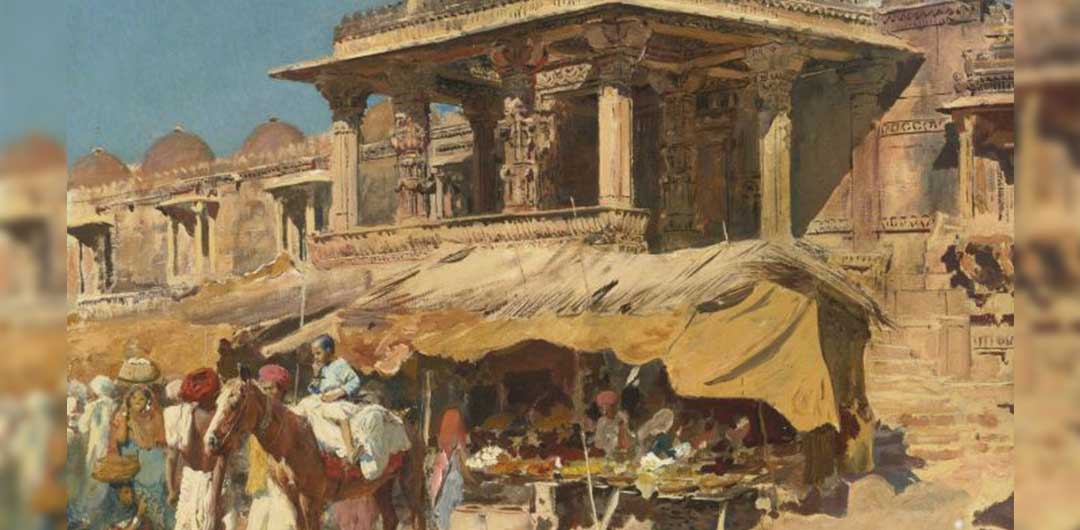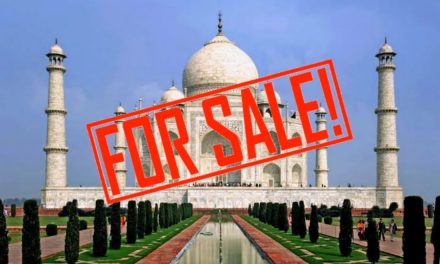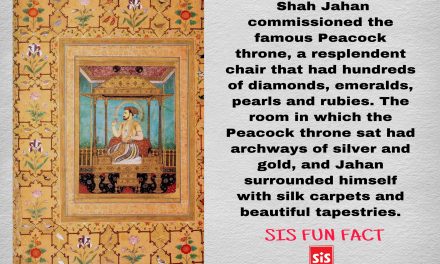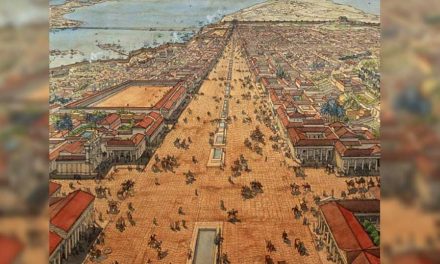Tigers, elephants, rhinoceros, serpents and many more exotic species were now in their land. People watched in awe as these animals gradually made their home in Rome. How did those animals get there? The answer is simple- trade.
The history of this trade is documented in the literature and archaeological remains. This evidence tells us a lot about the ups and downs of the trade and its expansion throughout the region. However, this trade did not begin during the Roman times but only grew stronger. This relation dates back to the 13th century BCE, during the time of Pharaoh Ramsses II, known as Ozymandias to the Greeks. Upon studying his mummy found by the British Museum, specs of eastern influence were discovered. The archaeologists found peppercorns in the nostrils of the mummified pharaoh, which upon research they linked to being originated from present-day Kerala.
The Indian Subcontinent was always rich in resources and neighbouring nations used it to their advantage. Trade relations with the Indian Subcontinent originally started during the Neolithic period. These trade networks were improved and expanded during the Sindhu-Sarasvati Civilization, and trade was conducted with ancient cultures such as Egypt and Mesopotamia. However, near the end of this civilization trade between them began to decline, but it was renewed by the 6th century BCE when the Ganga Valley started to urbanize. Around the 1st century BCE, the Romans developed trade relations with the Indian Subcontinent. Although the Indo-Roman trade began over the 1st century BCE, it reached its pinnacle through the 1st and 2nd centuries CE. Arabia, Asia Minor, and parts of northern Africa were conveniently located to facilitate trade between South Asia, West Asia, and Europe. What’s interesting is that the trade balance was mostly to the East’s advantage, and Roman gold and silver coins flowed into the country, boosting their wealth.
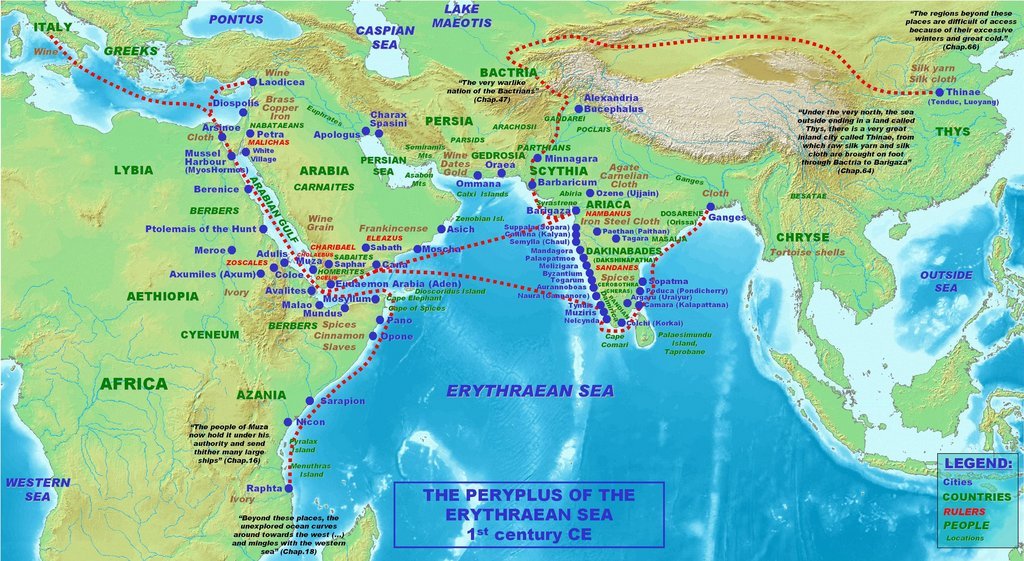
Roman trade with India according to the Periplus Maris Erythraei, first century C.E.;Image Source: New world encyclopedia
In terms of India, the earliest evidence of this trade could be found in the southern peninsula, particularly in the state of Kerala. It was carried out both on sea and land. The Sakas and the Satavahanas were in charge of maritime trade, while the Kusanas were in control of trade on land. It is claimed that Kaniska, the Kusana king, used the Roman gold currency standard for his own issues in order to increase foreign trade. For a while, the political difficulties between the Sakas and the Satavahanas affected this business. The Chinese silk route was of great significance to Europe. When the Parthians started interfering, hurdles were created and the exports via this route faced great challenges. The merchants desperately looked for an alternative path to carry on their trades. They even sought help from Augustus, the Roman Emperor of the time, who asked the traders to switch to sea routes and also vouched to protect them. This is when maritime trade became popular among these traders. One of the most important sources for reconstructing the history of this commerce is Periplus on the Erythrean Sea, a text written by an unknown Greek sailor. This book acted as an important guide for most sea navigators of the time.
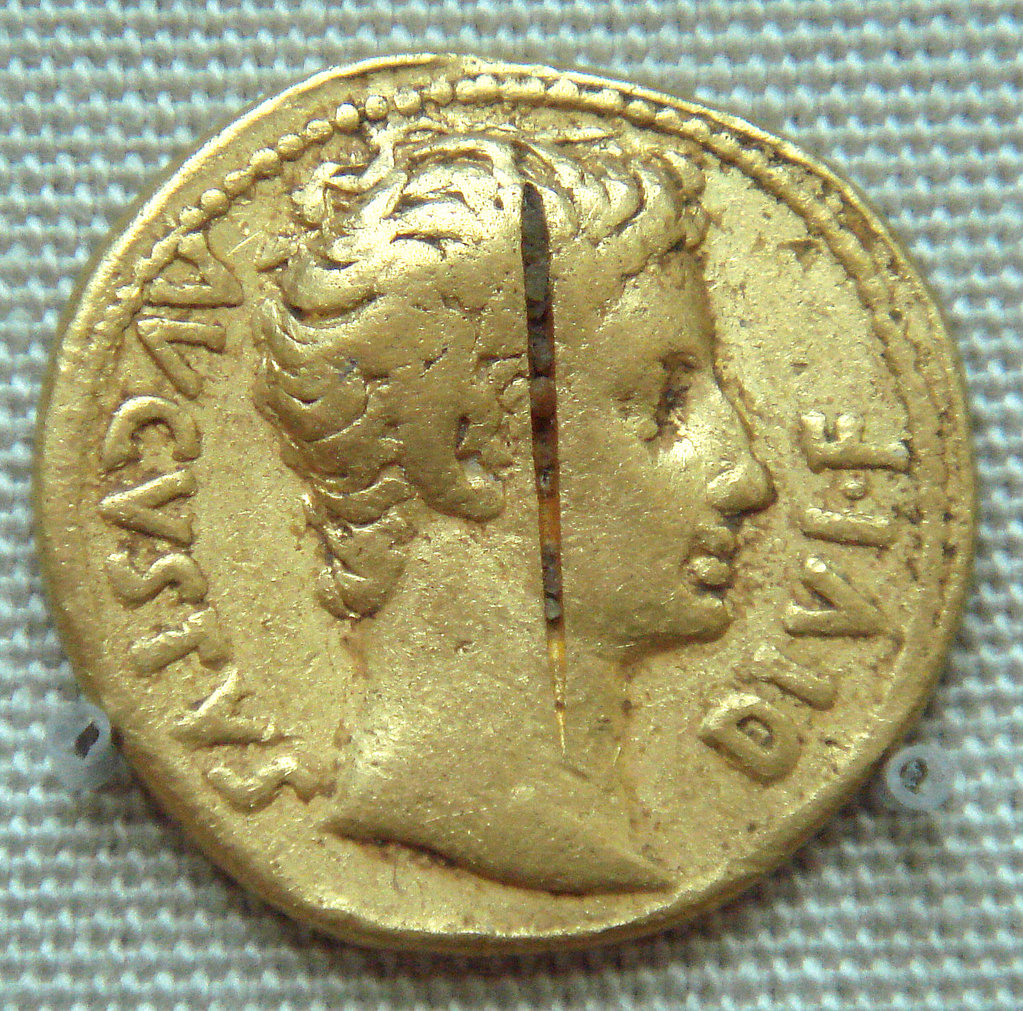
Coin of the Roman emperor Augustus found at the Pudukottai hoard. British Museum.; Image Source: New world encyclopedia
The Greeks were already familiar with what the Indian subcontinent had to offer ever since Alexander stepped foot in India. However, the trade relations they shared was nothing compared to what the Romans had developed later in the years.
After the demise of Julius Caesar, Rome was under the reign of Augustus. The Roman empire had replaced Greek kingdoms as the administrator of the eastern Mediterranean basin, resulting in the expansion of direct marine trade with the east. The opening of the Red Sea by the Greeks and the Romans’ understanding of the region’s yearly monsoons led to major growth in the trade- mainly the Indian Ocean trade and the Bay of Bengal trade. The stability brought to the region by the Roman Empire from the reign of Augustus allowed for fresh expeditions and the formation of a sound silver and gold coinage, encouraging trade to flourish. Soon, it became a global transit point that the Romans used to transport all that they did not have and more.
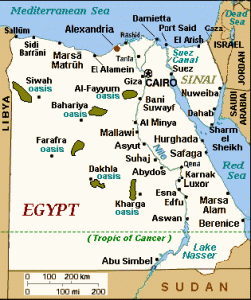
Sites of Egyptian Red Sea ports, including Alexandria and Berenice.; Image Source: New world encyclopedia
All this information was gathered from the works of Ptolemy, Strabo and other western documents. The Indian subcontinent did not actively document its history and adopted this trait from the Romans. Thus most of the documentation is Eurocentric and focuses on their achievements. But we are not here to talk about the Romans; we must know about the impact the east had on the lifestyle of the west.
If we look into the maps of the trade routes, we can easily tell that other than the Himalayan region, the most commonly used routes were via the seas. The south and south-west coast of the Indian subcontinent was the main trade hub for the Romans, with about 20 ports situated along this route. Despite the unfavorable conditions, the region was considered an important place of trade since all the ships carrying precious stones, pearls, spices and exotic animals took this route. Indian merchandise soon became a part of the Romans’ daily lives and flooded their cities. The women wore pearls from the Indian Ocean and used eastern herbs, spices and oil in their food. Even the cotton cloth they wore and the indigo they used for colors came from the east.
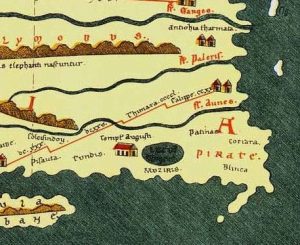
Muziris, as shown in the in the Tabula Peutingeriana.; Image Source: New world encyclopedia
The Romans gave gold coins in exchange for everything they took, leading to a major turning point over time. The trade was mainly for luxury items at first. Imported ivory, tortoise shells, wood, pearls, sesame oil and different spices were in great demand in the Roman markets. Other precious and semi-precious stones like diamonds, onyx, ruby, amethyst, were popular among women. Bharuch, or Bhrgukachcha, as known in ancient times, was renowned for its wheat and ghee exports. Eventually, day-to-day commodities, like cotton and pepper, also became important for trade. The Indian subcontinent did not need much but still indulged in Roman expensive wine, olive oil, silverware and high-quality cloth, which the Roman merchants mostly brought back as gifts. On the top of the list of imports was wine, called Varuni, transported in specially designed carriers known as Amphorae. These Roman Amphorae have been discovered in various places all over the subcontinent that indicate how significant this trade relation was. Besides this, the Indians loved Roman women and would bring them back as dancers for their harem. However, the relation between the west and east was beyond trade. Cultural exchanges between the two parties became common over the years and during the time of Emperor Augustus a fleet of around 120 ships sailed to the subcontinent each year. Upon further research, it was also discovered that the Tamil rulers of the time were fond horses which were also a part of the Roman exports to India.
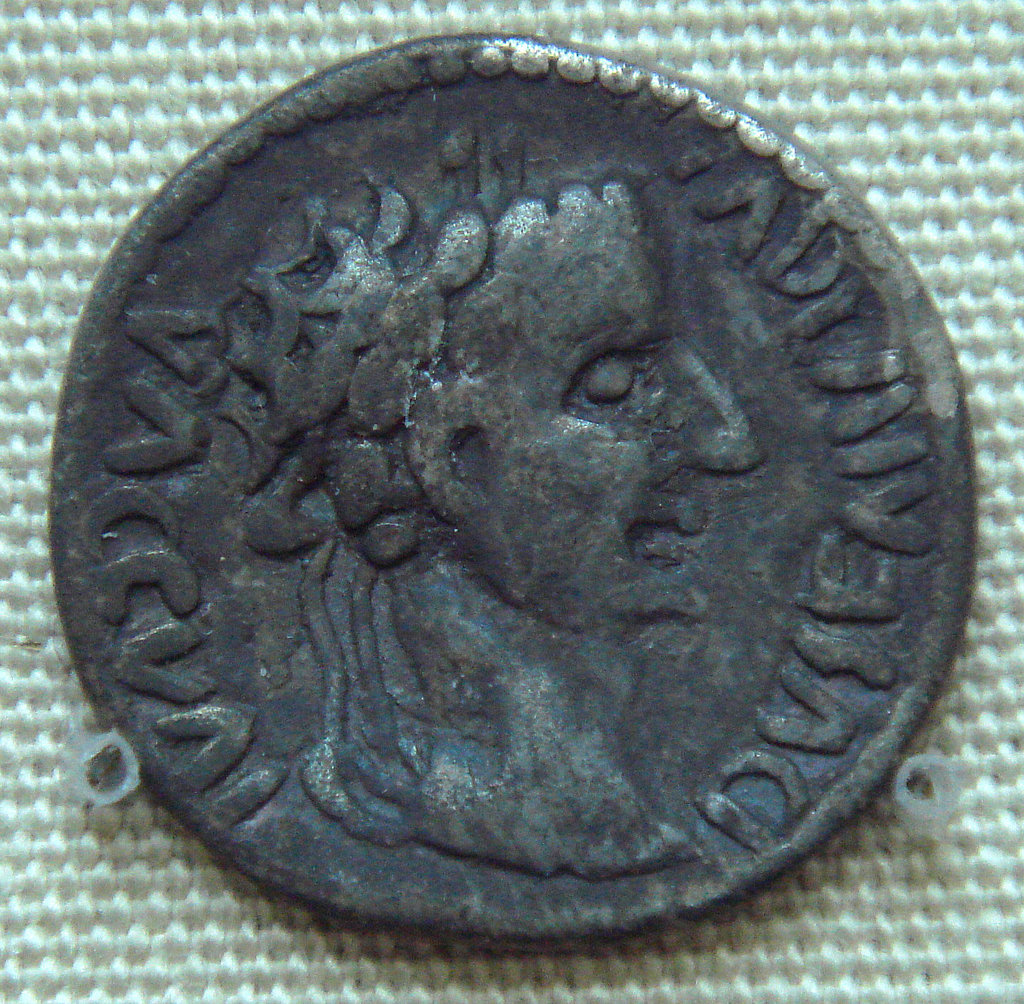
A 1st century C.E. Indian imitation of a coin of Augustus, British Museum.; Image Source: New world encyclopedia
The sea voyage from Rome to the western coast of India took around sixteen weeks, and the ships set off from Mussel Harbor on the winter equinox. Some Roman traders would set out from Myos Hormos or Berenice (in Egypt) to begin their voyages. Because the Arabs would not allow Indian traders to proceed any further, Ocelis at the mouth of the Red Sea was the final stop for exchanging goods. Despite this limitation, Indian merchants controlled a large portion of the Indo-Roman trade.
This trade brought immense prosperity to the subcontinent. The rulers and merchants indulged in the riches they accumulated. People started settling along the trade routes and with that job opportunities began to emerge in the areas. New occupations- around 36- were introduced among which crafting flourished the most as a result of the Indo-Roman trade. The revenue earned was heavily spent to reform the culture of the subcontinent. Around 200-250 BC, several industries were developed all over the subcontinent and improvements were also made to the infrastructure which helped to enhance this trade.
While the subcontinent reached the peak of its prosperity, the Roman economy began to collapse. As a result of the huge imports in exchange for millions of gold coins, they could barely survive with the remaining revenue. To prevent the situation from worsening, the Roman senate levied a sort of ban on the Indo-Roman trade. However, this could not stop the trade from taking place. People found ways to sneak products in and out of Italy. All the Roman effort went in vain as things went back to how they used to be; except the number of gold coins they exchanged was much less compared to before. Over time, the exports did not decrease to a great extent but new trade relations and routes overshadowed, what was once one of the greatest commerce in history. Nonetheless, there is no denying that the Indo-Roman trade is what aided the subcontinent to reach new heights and introduced the Romans to better ways to pamper themselves. We must understand the significance of this trade as it did not just shape the history of the two nations but helped to bring several parts of the world together.
The Indo-Roman trade was not limited to the south-western region of the peninsula only. Bengal was equally involved in this system, which will be highlighted in the upcoming parts of this series.
▪️This is just one of the many parts of the 5000 year history series of the Indian subcontinent
